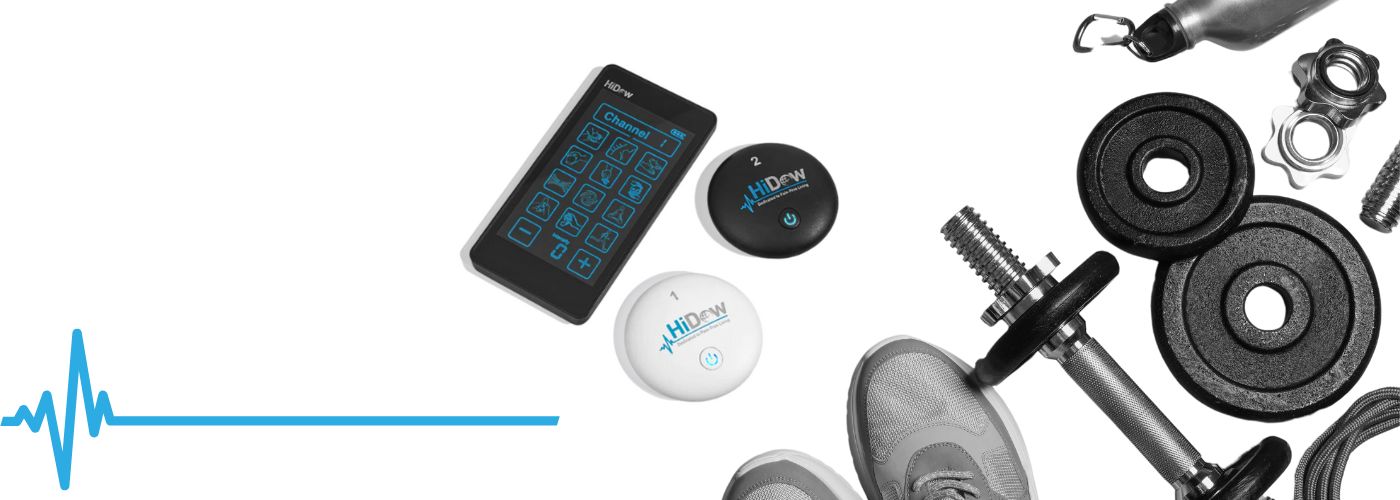Neck pain can be a real headache – quite literally. From staring at screens all day to poor posture, the modern lifestyle has made neck discomfort an all too common complaint. But fear not, for there is a revolutionary solution by using a TENS unit for neck pain that’s showing promise to zap away your neck pain!
How Does A TENS Unit For Neck Pain Work?
When it comes to managing neck pain, using a TENS unit can be a game-changing solution. This device works by sending electrical impulses through the skin to the nerves in the neck area, effectively blocking pain signals from reaching the brain.
By stimulating the nerves with gentle electrical currents, TENS units help to reduce muscle stiffness and tension in the neck muscles, providing relief from discomfort and soreness.
Moreover, TENS units also trigger the release of endorphins – our body’s natural painkillers – which further alleviate neck pain and promote relaxation. The adjustable settings on these devices allow users to tailor the intensity levels according to their comfort and needs, making them a versatile tool for managing various degrees of neck pain.
With regular use, TENS units can not only provide immediate relief but also contribute towards long-term improvement in neck mobility and function.
Best TENS Unit Placement For Neck Pain
When it comes to using a TENS unit for neck pain relief, proper electrode placement is crucial for maximizing its effectiveness.
One of the best placements for targeting neck pain is to position the electrodes and neck wrap on either side of the cervical spine, about one inch away from the base of your skull. This positioning allows the electrical impulses to penetrate deep into the muscle tissue, soothing tension and reducing discomfort.
Another effective placement option is to place one electrode at the base of your neck and the other on your upper back, creating a pathway that targets both the source of pain and surrounding muscles that may be contributing to tension.
By strategically placing the electrodes in these key areas, you can optimize the benefits of TENS therapy for alleviating neck pain. Experiment with different placements and intensities to find what works best for your specific needs and enjoy relief from neck discomfort with targeted TENS therapy.
How Long Can You Leave A TENS Unit On Your Neck?
When it comes to using a TENS unit on your neck, it’s crucial to find the balance between effective pain relief and safety.
While there is no specific time limit set in stone, experts generally recommend using a TENS unit on your neck for around 30 minutes to an hour at a time. It’s important to listen to your body and adjust the intensity and duration of the treatment accordingly.
Leaving a TENS unit on your neck for too long can potentially lead to skin irritation or muscle fatigue. Furthermore, prolonged use of a TENS unit in one area may diminish its effectiveness over time as your body gets accustomed to the stimulation.
Consider rotating the placement of the electrodes and taking breaks between sessions to ensure optimal results without causing any harm. Always consult with a healthcare professional for personalized advice on how long you can safely use a TENS unit on your neck.
How To Choose A TENS Unit For Neck Pain
When selecting a TENS unit for neck pain, it’s essential to consider the size and shape of the device. Opt for a compact and lightweight unit that is easy to carry around and use on-the-go. Look for electrodes that are specifically designed for targeting the neck area, ensuring precise and effective pain relief.
Additionally, pay attention to the variety of intensity levels offered by the TENS unit. Having adjustable settings allows you to customize the treatment based on your comfort level and the severity of your neck pain.

Consider units with multiple pre-set programs tailored for neck pain, offering different therapy modes like slow and fast massage pulses.
Moreover, choose a TENS unit with a user-friendly interface and clear instructions for seamless use at home or while traveling. Prioritize units with reliable battery life to avoid frequent interruptions during therapy sessions.
Ultimately, selecting a TENS unit that fits comfortably against your neck and offers versatility in terms of programming options will help you effectively manage and alleviate neck pain.
Where Should You Not Place A TENS Unit For Neck Pain?
One crucial aspect to consider when using a TENS unit for neck pain is the placement of the electrodes. While TENS therapy can be highly effective in reducing neck pain, it is essential to avoid placing the device directly on sensitive areas such as the front of your neck.
The delicate tissues and structures in this region can be easily irritated or damaged by the electrical stimulation, leading to potential discomfort or even injury.
Furthermore, it is advisable to steer clear of placing the TENS unit directly over any open wounds or broken skin on your neck. Electric currents from the device may interfere with the body’s natural healing process and increase the risk of infection.

To ensure safe and effective use of a TENS unit for neck pain relief, always consult with a healthcare professional for proper guidance on electrode placement and usage techniques. Remember, correct placement plays a significant role in maximizing the benefits of TENS therapy.
Can You Overstimulate Neck Muscles With A TENS Unit?
Using a TENS unit to stimulate neck muscles can be highly effective for pain relief and muscle relaxation. However, overusing the TENS unit or using it at high intensities for extended periods may lead to overstimulation of the neck muscles.
This can cause muscle soreness, fatigue, and even potential injury if not used properly.
It is crucial to follow the instructions provided with your TENS unit and start with low-intensity settings before gradually increasing as needed. Additionally, taking breaks between sessions and avoiding frequent or prolonged use can help prevent overstimulation of the neck muscles! Keep all these considerations in mind when wanting to deal with neck pain.

Related Stories
Red, White, and Soothe: How HiDow Helps You Recover in the Heat
Recovery that works in winter doesn’t always hold up in the heat. The body reacts...
Jul
Massage Gun Showdown: How the Power Duo Compares to Traditional Methods
Have you ever considered that a handheld device could revolutionize your muscle recovery? With the...
Jun
Fatherly Fitness Tips For Men’s Health Month
Men’s Health Month is more than a date on the calendar—it’s a call to action....
Jun
Built to Move: The Everyday Recovery Edit
Movement is what keeps us going—literally. Whether it’s recovering after a run, loosening up after...
Jun
Unlocking The Secret To Tissue Injury Recovery With TENS/EMS Devices
Have you ever wondered why some injuries take longer to heal than others? Tissue injuries...
May
Get Mobile With HiDow TriggerFlex Tools & TriggerFlex 2.0
Tight muscles holding you back? Whether you’re dealing with daily tension or post-workout soreness, recovery...
May